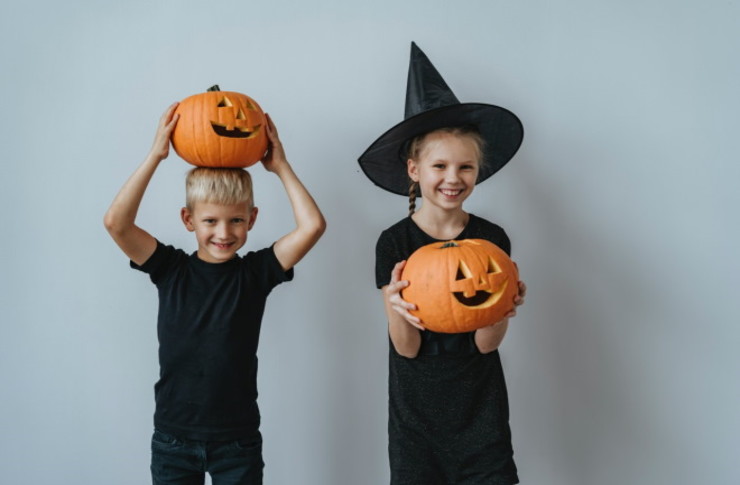Halloween: Costumes, Decorations, Pumpkins, and Ghosts
Halloween is an annual observance that blends history, folklore, and contemporary celebration. From neighborhood trick-or-treating and carved pumpkins to spooky decorations and costume parties, the holiday brings a mix of creativity and community. Understanding its background and practical tips can help you celebrate safely and meaningfully.

Halloween origins and traditions
Halloween has roots in ancient harvest festivals and rituals, most often linked to the Celtic festival of Samhain and later influenced by Christian observances like All Hallows’ Eve. Over centuries, practices such as lighting bonfires, wearing disguises, and leaving offerings evolved into modern customs. In many places, Halloween became associated with remembering the dead and marking the end of the agricultural year.
Today’s Halloween mixes those older elements with newer traditions: trick-or-treating for children, seasonal foods, community parades, and themed events. Local services such as community centers and libraries often host family-friendly programs, while businesses may offer special displays and seasonal merchandise. The holiday’s adaptability is part of why it remains widely observed across different cultures.
How to choose a costume
Choosing a costume starts with considering comfort, weather, and purpose. For children, visibility and mobility are crucial—bright colors, reflective tape, and fitting footwear help keep trick-or-treating safe. Adults may choose costumes for parties, workplace events, or performances; think about layers for cold evenings and non-restrictive materials so you can move comfortably.
Creativity can come from thrifted clothing, household items, or DIY projects that limit waste. When selecting a costume, be mindful of cultural sensitivity and avoid imagery that appropriates or demeans others’ identities. For pets, comfort and breathing room are the top priorities—avoid tight fits or obstructive masks. Simple makeup and small accessories often offer a safer alternative to full masks.
Decoration ideas and safety
Decorations set the tone for Halloween, from understated fall displays to elaborate haunted-house setups. Common elements include pumpkins, faux cobwebs, lanterns, and motion-activated props. Layering textures—hay bales, autumn leaves, and warm lighting—creates an inviting seasonal look, while focused spotlights or colored bulbs can add dramatic effect for evening events.
Safety should guide decoration choices: use battery-operated candles instead of open flames inside pumpkins, secure cords and props to prevent trips, and keep decorations away from heat sources. If using electrical decorations outdoors, choose weather-rated extension cords and GFCI outlets. For community events, consider signage and clear pathways to accommodate visitors of all ages and mobility levels.
Pumpkin carving and uses
Pumpkins are a central visual and culinary element of Halloween. Carving classic jack-o’-lantern faces is a popular activity; alternative options include painting pumpkins, using stencils, or carving geometric patterns for a modern look. To extend a carved pumpkin’s lifespan, clean the interior well, dry the surface, and consider applying a thin layer of petroleum jelly to cut edges, or refrigerate between displays in warm climates.
Beyond carving, pumpkins are versatile in the kitchen. Pumpkin puree can be used for soups, breads, pies, and savory dishes. Seeds can be roasted with spices for a nutritious snack. If you’re looking for sustainable options, many municipal compost programs accept pumpkin waste, or you can compost them at home. Keep in mind that carved pumpkins should be removed once they begin to rot to avoid attracting pests.
Ghost imagery and folklore
Ghosts are a recurring motif in Halloween decorations, stories, and entertainment, drawing on a long human fascination with spirits and the afterlife. Folklore about ghosts varies widely across cultures, from benevolent ancestral figures to ominous apparitions. Contemporary storytelling often uses ghost themes to explore memory, regret, or unresolved matters in a way that fits the reflective aspect of the season.
In popular culture, ghost imagery appears in costumes, props, and themed attractions. When presenting ghost stories or haunted experiences, consider audience age and sensitivity—what may be thrilling for adults can be frightening for young children. For educational uses, ghost tales can be framed within historical or literary contexts to discuss how different societies understand death and remembrance.
Conclusion
Halloween brings together history, creativity, and community through costumes, decorations, pumpkins, and ghost stories. Whether you focus on simple family traditions or a larger neighborhood display, attention to safety, cultural respect, and sustainability enhances the experience. Observing the holiday thoughtfully preserves its playful and reflective elements for people of all ages.






